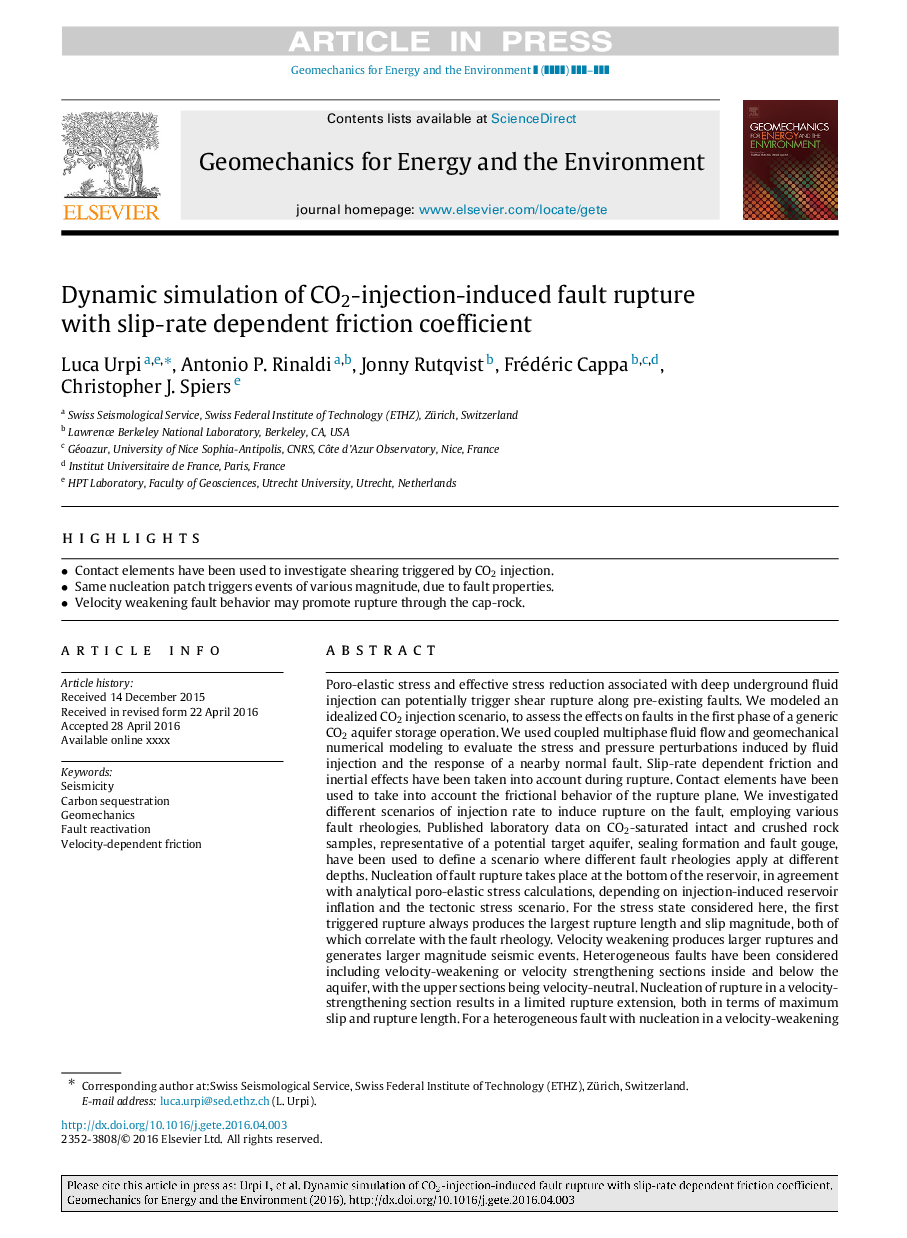| کد مقاله | کد نشریه | سال انتشار | مقاله انگلیسی | نسخه تمام متن |
|---|---|---|---|---|
| 6746691 | 505171 | 2016 | 19 صفحه PDF | دانلود رایگان |
عنوان انگلیسی مقاله ISI
Dynamic simulation of CO2-injection-induced fault rupture with slip-rate dependent friction coefficient
دانلود مقاله + سفارش ترجمه
دانلود مقاله ISI انگلیسی
رایگان برای ایرانیان
کلمات کلیدی
موضوعات مرتبط
مهندسی و علوم پایه
علوم زمین و سیارات
مهندسی ژئوتکنیک و زمین شناسی مهندسی
پیش نمایش صفحه اول مقاله

چکیده انگلیسی
Poro-elastic stress and effective stress reduction associated with deep underground fluid injection can potentially trigger shear rupture along pre-existing faults. We modeled an idealized CO2 injection scenario, to assess the effects on faults in the first phase of a generic CO2 aquifer storage operation. We used coupled multiphase fluid flow and geomechanical numerical modeling to evaluate the stress and pressure perturbations induced by fluid injection and the response of a nearby normal fault. Slip-rate dependent friction and inertial effects have been taken into account during rupture. Contact elements have been used to take into account the frictional behavior of the rupture plane. We investigated different scenarios of injection rate to induce rupture on the fault, employing various fault rheologies. Published laboratory data on CO2-saturated intact and crushed rock samples, representative of a potential target aquifer, sealing formation and fault gouge, have been used to define a scenario where different fault rheologies apply at different depths. Nucleation of fault rupture takes place at the bottom of the reservoir, in agreement with analytical poro-elastic stress calculations, depending on injection-induced reservoir inflation and the tectonic stress scenario. For the stress state considered here, the first triggered rupture always produces the largest rupture length and slip magnitude, both of which correlate with the fault rheology. Velocity weakening produces larger ruptures and generates larger magnitude seismic events. Heterogeneous faults have been considered including velocity-weakening or velocity strengthening sections inside and below the aquifer, with the upper sections being velocity-neutral. Nucleation of rupture in a velocity-strengthening section results in a limited rupture extension, both in terms of maximum slip and rupture length. For a heterogeneous fault with nucleation in a velocity-weakening section, the rupture may propagate into the overlying velocity-neutral section, if the extent of velocity-weakening and associated friction drop are large enough.
ناشر
Database: Elsevier - ScienceDirect (ساینس دایرکت)
Journal: Geomechanics for Energy and the Environment - Volume 7, September 2016, Pages 47-65
Journal: Geomechanics for Energy and the Environment - Volume 7, September 2016, Pages 47-65
نویسندگان
Luca Urpi, Antonio P. Rinaldi, Jonny Rutqvist, Frédéric Cappa, Christopher J. Spiers,